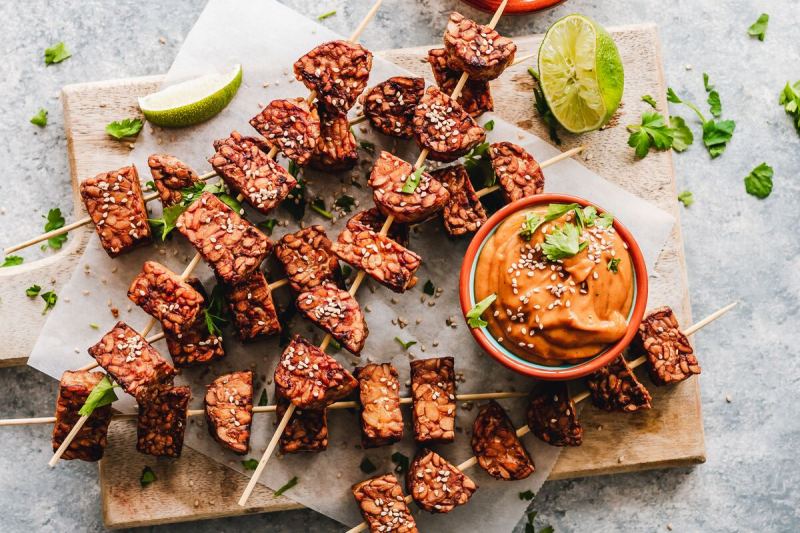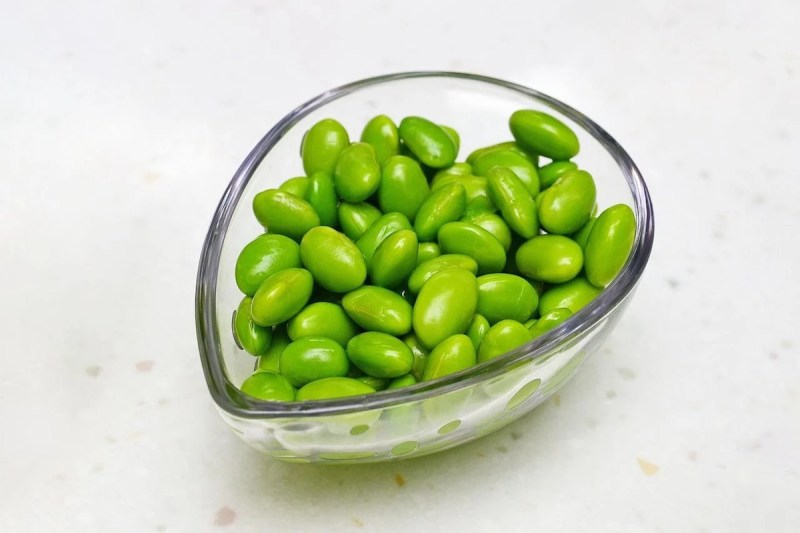Do you follow a vegetarian or vegan diet, or are you simply not a fan of meat? Just because you avoid some animal products, that doesn’t mean you can’t still build muscle efficiently. As a trainer, I have worked with many clients who preferred plant-based foods, and they were able to see great results with purposeful planning.
A high-protein diet is essential for building muscle, so knowing what to add to your grocery list is important. Keep reading to discover 11 non-meat, high-protein foods.
Can you build muscle without meat?

Yes, you can build muscle without meat. Muscle growth is ultimately influenced by adequate protein intake, regular strength training, and proper recovery. As long as you consume enough protein from plant-based sources and ensure you’re getting the necessary nutrients on a consistent basis, your body can build muscle effectively.
One thing to note is that animal products contain all the essential amino acids, while most plant-based foods don’t. So, you want to consume a variety of protein-rich plant foods to cover all nine essential amino acids, which are the building blocks of muscle.
Additionally, staying consistent with progressive resistance exercises, eating enough calories, and allowing adequate rest are all crucial components in promoting muscle growth, whether or not you consume meat.
Are non-meat protein sources better for you?

Non-meat protein sources can be better for you, depending on your health goals and dietary preferences. Plant-based proteins tend to be lower in saturated fat and cholesterol, which can support heart health. In fact, an NIH study shares that “current evidence supports the idea that CVD risk can be reduced by a dietary pattern that provides more plant sources of protein compared with the typical American diet and also includes animal-based protein foods that are unprocessed and low in saturated fat.”
Many non-meat sources also tend to be higher in fiber, vitamins, and minerals that animal proteins can lack. Still, as I mentioned before, it’s essential to ensure you’re consuming a variety of protein sources to meet all nutritional needs.
11 non-meat, high-protein foods to include in your diet

Here are 11 high-protein, non-meat foods to consider including in your diet.
- Tofu is a versatile soy product with a high protein content that’s great for stir-fries and grilling.
- Tempeh is a good choice if you prefer a nutty flavor, and it’s made from fermented soybeans.
- Lentils are a rich source of protein and fiber, and they are perfect for soups, salads, and stews.
- Chickpeas are high in protein and fiber and great for hummus, salads, or roasted as a snack.
- Edamame is a young soybean packed with protein and is ideal as a snack or in salads.
- Quinoa is a great choice, as it is one of the plant-based options that’s a complete protein, providing all the essential amino acids.
- Greek yogurt is packed with protein and can be added to smoothies or parfaits.
- Peanut butter is a versatile protein-rich spread, perfect for toast, smoothies, or dipping fruits.
- Hemp seeds are a high-protein, omega-rich seed that can be added to smoothies or sprinkled on salads.
- Chia seeds are great for smoothies, puddings, or baking.
- Black beans are full of protein and fiber, and they are perfect for soups, salads, or tacos.
What is a realistic protein goal for non-meat eaters?

A realistic protein goal for non-meat eaters typically ranges from 1 to 1.2 grams of protein per kilogram of body weight, depending on activity level and fitness goals. For those focused on building muscle, 1.2 to 1.6 grams per kilogram may be more appropriate.
Factors such as age, gender, and how often you exercise also play a role in determining protein needs. Try your best to be consistent with your protein intake and plan your meals ahead of time to ensure you’re eating enough.
Other tips for hitting your protein goal

To hit your protein goal, consider the following tips:
- Spread your protein intake throughout the day, aiming for 20 to 30 grams per meal.
- Include protein-rich snacks like Greek yogurt, protein bars, or edamame to make hitting your daily goal easier.
- Opt for a variety of plant-based proteins, such as legumes, tofu, tempeh, and quinoa, to ensure all amino acids are covered.
- Consider adding a plant-based protein powder to smoothies or shakes for an easy protein boost.
- Meal prep and batch cooking can help you plan ahead, ensuring you have protein-packed meals ready.
- Pair protein with healthy fats and carbohydrates to balance your meals and keep you feeling full.
Frequently asked questions

How do you get 100 grams of protein without meat?
To get 100 grams of protein without meat, include plant-based options like tofu (20 grams per cup), lentils (18 grams per cup), chickpeas (15 grams per cup), quinoa (8 grams per cup), edamame (17 grams per cup), and Greek yogurt (10 grams per serving). Combine these to meet your protein needs throughout the day.
How do you get 200 grams of protein a day without meat?
To reach 200 grams of protein without meat, include high-protein plant sources like tofu, tempeh, lentils, chickpeas, edamame, quinoa, Greek yogurt, and protein-rich grains. You will also want to consider incorporating protein powders (pea, hemp, or rice) in smoothies or shakes to help reach your goal, as it is quite ambitious.
Which vegan food has the highest protein?
The vegan food with the highest protein is tempeh, which provides about 21 grams of protein per 4-ounce serving. Other high-protein options include tofu (about 18 grams per 4 ounces), edamame (17 grams per cup), and lentils (18 grams per cup), which offer substantial plant-based protein.




